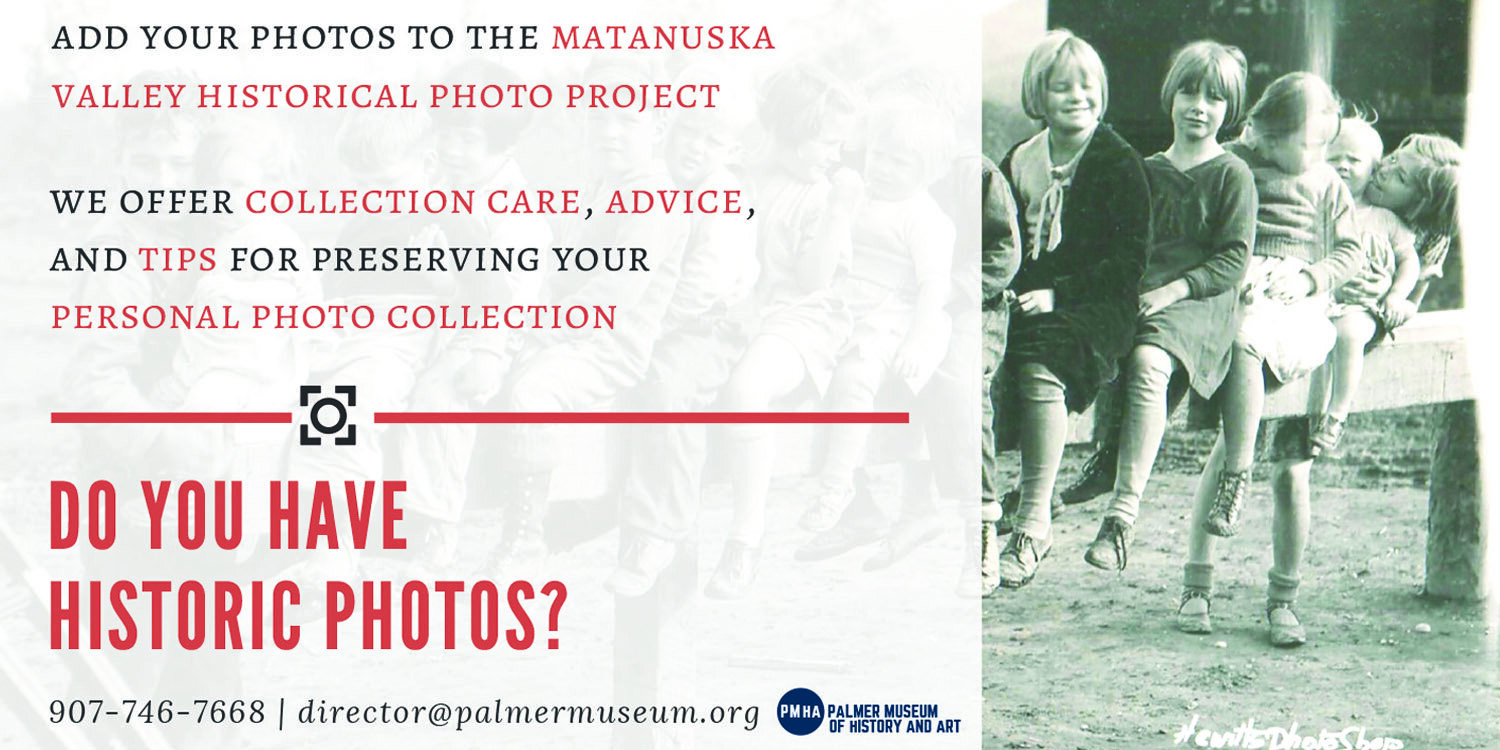Contributed by Richard Estelle
Many of the items in our collection come from the early days of the Matanuska Colony Project, in the late 1930’s. When the colony folks arrived on the railroad siding at what was to become the town we know today as Palmer, most of the surrounding country had lots of birch and spruce trees standing in the way of their fine fields to come. In addition, tents served as temporary living quarters until some of those spruce trees could be cut and fashioned into homes.
Clearing that land and building those houses meant lots of laborious axe work. Those plying the axes learned well the need to keep their blades sharp. The communal sharpening wheel saw lots of use to that end.
The sharpening stone that came to our collection may very well be the same one seen in a colony photo in our current museum display. The picture, from the Alaska State Library collection, shows colonist Ed Moss seated on the machine, pumping the pedals up and down to turn the fine-grained quartz sandstone wheel while he holds his axe blade against it to sharpen the edge.
The photo shows a part that’s missing from our machine. Fixed by a rod above the revolving stone, one can see a small funnel that held water and let it drip onto the stone for lubrication during the sharpening process. The peach can in the bottom corner of the photo probably held more water to resupply the funnel.
The grindstone, in a metal frame such as this one, or a wooden support of some home-made design, became a common feature on many homesteads and can often be seen in old photographs standing near the settler’s cabin or woodshed.

















































